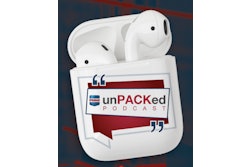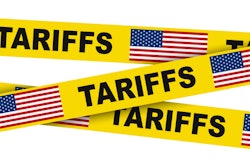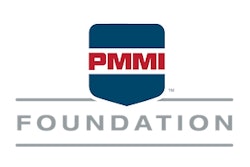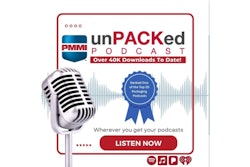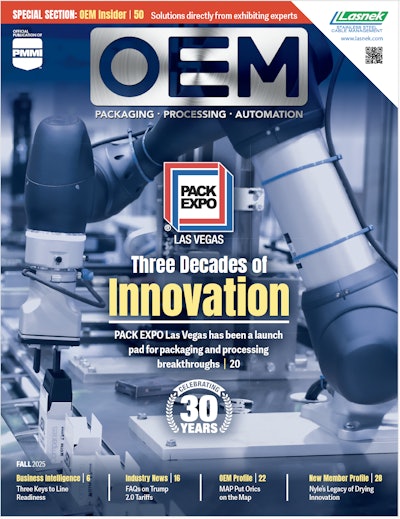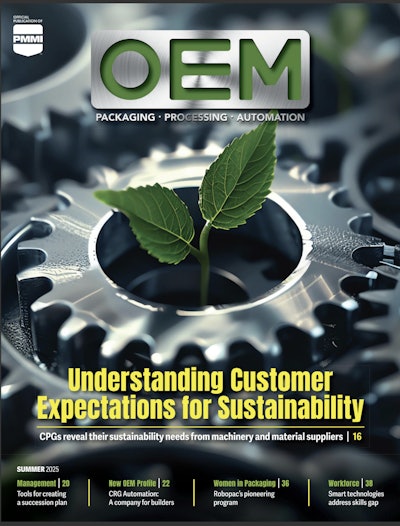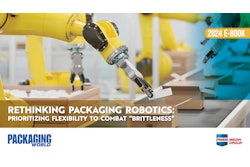Ever stop to think how every expiration date, barcode, and batch code ends up on a package? Package This dives into the essential world of marking and coding—a vital part of modern packaging lines. In less than 5 minutes, you’ll learn the basics of how it all works, from small and large character inkjet printers and thermal transfer coders, to laser marking systems, embossing and debossing machines, and hot/cold stamping tech and see some of the top suppliers.
See how these technologies deliver compliance, traceability, and brand polish—all at lightning speed. If you’re in packaging or processing—or just getting started in the industry—this episode gives you the insider scoop on one of the most important (but often overlooked) parts of the line. Watch now and learn how to make your mark!
Welcome to Package This, your go-to guide to the world of machines that keep packaging lines running smoothly.
Today, we’re diving into the fast-paced, high-precision world of marking and coding equipment, the tech responsible for printing expiration dates, batch numbers, barcodes, and more on just about every package you see. These machines work their magic on materials ranging from paper and plastic to metal and glass, so let’s get into it.
Small Character Inkjet
First up, let’s look at small-character inkjet systems, like this one from Squid Ink, which use a non-contact method to propel droplets of ink onto the surface material to mark lot codes, expiration dates, and other information directly on a package at high rates.
Here we see Squid Ink’s JetStream™ continuous inkjet printing systems showing just what a small character system can do. It prints high quality small characters on a variety of substrates: porous, non-porous, smooth, textured, curved, concave and other surfaces. Printing up to 5 lines of text, the JetStream is designed to offer a reliable and cost-effective solution for virtually any small character, primary product coding application.
Squid Ink’s system also features a color touchscreen interface with options to help users make their mark on a variety of products while streamlining their coding operation.
Large Character Inkjet
Now, let’s scale it up a bit! Large-character inkjet systems are all about visibility. Think barcodes, shipping info, logos — stuff that has to be scannable, even from a forklift.
Take Squid Ink’s CoPilot® Gemini™ printing system, which prints superior quality high-resolution characters on porous or non-porous surfaces.
This system is designed for applications where immediate dry times on non-porous surfaces are required. This system can also run UV LED curable inks.
With a massive 5.6-inch print height and print speeds up to 220 feet per minute, the CoPilot Gemini provides a cost-effective solution for packaging operations who need to make their mark on a wide variety of products and substrates.
Thermal Transfer Coders
Thermal transfer coding (also known as thermal transfer overprint or TTO) uses heat and a ribbon to press crisp, high-res images or barcodes directly onto flexible materials like film, foil, or paper.
Bell-Mark’s EasyPrint system is a standout here. It can print directly onto packaging materials at blazing speeds — up to 800 millimeters per second — with a print area of over 8.3 inches.
With the ability to print many types and colors, EasyPrint’s thermal ribbon prints directly on a wide range of different types of substrates.
EasyPrint has comes in an optional washdown version, IP67-rated for protection against harsh environments, with a hygienic design that includes a sealed electrical bay and watertight connections.
Laser Coders
Prefer something even cleaner? Laser coding skips the ink and ribbon altogether. These systems use concentrated beams of light to etch or ablate the surface — leaving permanent, tamper-resistant marks on glass and metal.
Laser coding is also a good option for high-speed lines where zero consumables is a big win. MPERIA® lasers from Matthews Marking Systems eliminate the need for consumables—lowering total cost of ownership and reducing packaging waste.
MPERIA’s UV laser OptiBeam technology automatically adjusts the beam profile and focus, ensuring crisp, high-contrast marks.
With a built-in Vibration Correction System, Matthews’ Fiber Laser maintains mark clarity even on fast or unstable production lines.
Embossing/Debossing
Now for a tactile twist: embossing (or raising) and debossing (or recessing) literally sculpt your brand or product name into the packaging. It’s an eye-catching way to boost shelf appeal — especially on boxes, cans, or premium bags.
Hot and Cold Stamping
For a little dazzle and some security, consider hot and cold stamping. Hot stamping uses heat and pressure for metallic foil imprints, perfect for premium cosmetics or luxury goods. Cold stamping uses adhesive and pressure, great for holograms or tamper-evident packaging.
There’s even more out there we could cover but time is limited. Bottom line: marking and coding gear isn’t just for compliance. It protects your brand, keeps the supply chain humming, and makes products pop on the shelf.
Please hit the like button, share this with your packaging peers, and subscribe for more episodes of Package This — we’ve got you covered on everything from robotics to recyclables.
And if you’re looking for top suppliers of marking and coding equipment — or anything packaging-related — check out PMMI ProSource at Prosource.Org, the industry’s most complete directory of packaging machinery and material suppliers.
Thanks for watching, and until next time…Keep on packaging!



